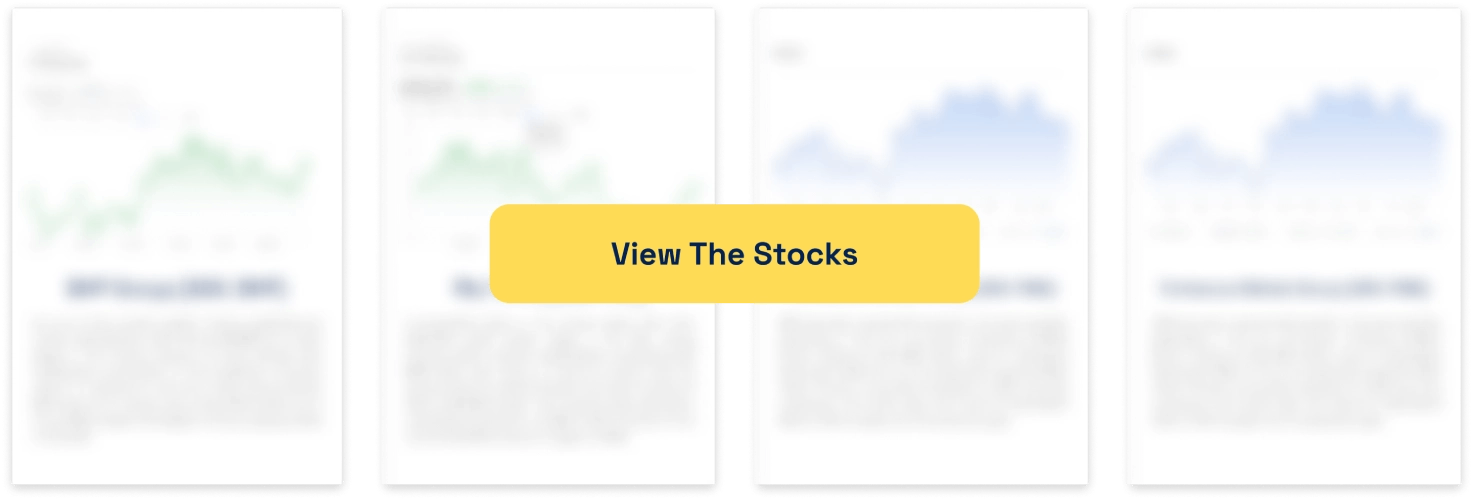3 ASX ETFs to Buy for Passive Income in May
![]() Ujjwal Maheshwari, May 16, 2025
Ujjwal Maheshwari, May 16, 2025
Investing in exchange-traded funds (ETFs) on the Australian Securities Exchange (ASX) has become one of the most popular ways to generate passive income for investors. But with a sea of options available, the question remains: which ASX ETFs should investors choose to build a reliable and sustainable income stream? In our view, focusing on ETFs that consistently deliver strong distributions while maintaining solid fundamentals is key.
In this article, we will explore three ASX-listed ETFs that stand out in May 2025 for their potential to provide steady passive income. We’ll break down why these funds are compelling choices for investors seeking reliable dividends, discuss their risk profiles, and consider the outlook for income-focused investing in the current market environment.
What Are ETFs and Why Are They Ideal for Passive Income?
Exchange-traded funds are investment vehicles that hold a diversified basket of assets, typically shares or bonds, and trade on stock exchanges like individual stocks. Unlike direct share ownership, ETFs allow investors to gain broad market exposure with lower costs and ease of trading.
We believe ETFs are particularly well-suited for generating passive income because many focus on dividend-paying stocks or fixed-income securities, delivering regular distributions to investors. This offers an efficient way to build income without the complexity of selecting individual securities or managing a portfolio.
Moreover, ASX-listed ETFs provide a wide array of options across asset classes, sectors, and income strategies, enabling investors to tailor their passive income plans according to their risk tolerance and income needs.
Vanguard Australian Shares High Yield ETF (ASX: VHY)
Why VHY Is a Top Pick for Income Investors
The Vanguard Australian Shares High Yield ETF (VHY) is widely regarded as a go-to for Australian investors aiming to secure stable dividends. The ETF targets companies within the S&P/ASX 300 Index known for high dividend yields. This focus means VHY invests heavily in established sectors like financials, utilities, and materials, sectors traditionally recognised for reliable income streams.
As of April 2025, VHY offers a trailing dividend yield of around 5.5%, notably higher than the broader ASX 200’s average yield of approximately 4%. The ETF also maintains a low management fee of around 0.25%, making it cost-effective for income-focused investors.
Portfolio Composition and Income Consistency
Its portfolio is weighted towards blue-chip Australian companies such as Commonwealth Bank, BHP Group, and Wesfarmers, all of which have demonstrated consistent dividend payments over the years. This stability helps smooth income volatility, which is crucial for retirees or investors relying on distributions.
Furthermore, VHY’s diversified holdings reduce concentration risk, spreading income sources across 70-80 companies.
Future Outlook for VHY
With the Reserve Bank of Australia maintaining relatively stable interest rates and inflation trending near target, dividend-paying companies remain attractive. We believe VHY will continue to deliver solid income, especially if corporate earnings remain robust.
However, investors should note the ETF’s sector concentration; heavy exposure to financials can amplify risks if economic conditions deteriorate. Still, for investors prioritising income, VHY remains one of the most reliable ASX ETFs.
BetaShares Australian High Interest Cash ETF (ASX: AAA)
A Defensive Income Choice in a Rising Rate Environment
While many investors chase equity dividends, fixed-income ETFs like the BetaShares Australian High Interest Cash ETF (AAA) offer a different avenue for passive income. AAA invests in short-term Australian cash deposits and bank bills, delivering an income stream that benefits directly from the Reserve Bank’s cash rate.
Currently, with the RBA’s cash rate holding steady around 4.10%, AAA offers a competitive yield of approximately 4.5%, far exceeding traditional savings accounts. This makes it a compelling option for conservative investors seeking capital preservation alongside income.
Key Features and Suitability
AAA’s ultra-short duration portfolio minimises interest rate risk, making its NAV relatively stable compared to bond funds. This stability, combined with monthly income distributions, makes AAA attractive for investors who want income without equity market volatility.
The ETF has a low management fee of 0.18%, which means more of the income generated is passed to investors.
Why AAA Makes Sense Now
Given the current macroeconomic backdrop, where central banks remain cautious about inflation but signal stable interest rates, holding AAA could be a smart tactical move. It helps investors diversify income sources and preserve capital in uncertain equity markets.
We’re not talking about high-growth assets here, we’re talking about dependable income with minimal risk, ideal for conservative portfolios or as a complement to equity income funds.
iShares S&P/ASX Dividend Opportunities ETF (ASX: IHD)
Targeting Quality Dividend Stocks with Growth Potential
The iShares S&P/ASX Dividend Opportunities ETF (IHD) focuses on high dividend-yielding companies with strong earnings growth potential. It tracks the S&P/ASX Dividend Opportunities Accumulation Index, which screens for companies with attractive dividend yields but also solid fundamentals.
IHD offers a trailing yield of about 5% as of May 2025, and its portfolio includes a mix of banks, real estate investment trusts (REITs), and industrials, sectors known for sustainable dividends and potential capital appreciation.
Diversification and Income Balance
This ETF balances income with growth, which we believe appeals to investors wanting passive income without sacrificing long-term capital gains. IHD’s holdings tend to be less concentrated than pure high-yield ETFs, offering exposure to a wider array of dividend-paying companies.
The Investment Case for IHD
In our view, IHD is particularly well-positioned as Australia’s economy stabilises post-pandemic and corporate profits improve. The fund’s focus on companies with consistent dividend growth could provide an income stream that keeps pace with inflation, a critical factor for investors worried about purchasing power erosion.
Like VHY, investors should consider sector exposure risks, especially to financials and property, but IHD’s strategy mitigates some of these through quality screening.
How to Choose the Right ASX ETF for Passive Income
We believe the right ETF choice depends heavily on your income goals, risk tolerance, and investment horizon. For example:
- If you want a higher income with some risk, VHY offers exposure to Australia’s top dividend payers but with equity market volatility.
- If capital preservation with steady income is paramount, AAA’s cash-focused approach fits well.
- If you seek a blend of income and growth, IHD provides a balanced dividend portfolio with potential for capital appreciation.
Importantly, all three ETFs distribute income quarterly or monthly, allowing investors to reinvest dividends or use them as regular income.
What Are the Risks?
While ETFs offer diversification, they are not without risks:
- Market Risk: Equity ETFs like VHY and IHD are subject to share market fluctuations, affecting income and capital.
- Interest Rate Risk: Cash ETFs like AAA benefit from rising rates but may lose appeal if rates fall.
- Sector Concentration: Australian dividend ETFs are often heavy in financials and resources, sectors sensitive to economic cycles.
- Currency Risk: Though these ASX ETFs invest primarily in Australian assets, investors with offshore exposure need to consider currency fluctuations if relevant.
Being aware of these risks helps investors build a portfolio that matches their financial goals and comfort levels.
Final Thoughts
In our view, building a portfolio with a combination of these ASX ETFs can provide investors with a diversified, reliable, and inflation-conscious passive income stream. While VHY and IHD focus on extracting income from high-yield Australian equities, AAA offers stability and liquidity with cash-like returns.
What are your income goals? How much volatility are you willing to accept? These questions should guide your allocation among these ETFs. What’s clear is that ASX ETFs remain one of the most accessible and efficient ways to generate passive income in the Australian market right now.
By staying informed, regularly reviewing your portfolio, and understanding the income dynamics of each ETF, investors can better position themselves to meet their financial needs with confidence.
What are the Best ASX Mining Stocks to invest in right now?
Check our buy/sell tips
FAQs
- What is the advantage of investing in Australian blue-chip shares for the long term?
Blue-chip shares like those mentioned generally have stable earnings, strong market positions, and a history of paying dividends. These qualities can provide both growth and income, helping investors build wealth steadily over time.
- How important is dividend income when choosing shares to hold long term?
Dividend income can be crucial as it provides steady cash flow, which can be reinvested to compound returns or used as income. Companies with reliable and growing dividends tend to be financially healthy and committed to shareholder returns.
- Are these shares suitable for investors new to the stock market?
While these shares are relatively stable, all investments carry risk. New investors should understand market fluctuations and consider diversification, but these companies are generally seen as lower-risk compared to speculative stocks.
- How does economic uncertainty impact these Australian shares?
Companies like Commonwealth Bank and BHP have shown resilience through past economic downturns thanks to their strong fundamentals. However, sector-specific challenges and global factors can affect share prices, so maintaining a long-term perspective is essential.
- Can international events affect the performance of Australian shares?
Absolutely. For example, BHP’s earnings are influenced by global commodity demand, while Macquarie’s operations are worldwide. International trade policies, currency fluctuations, and geopolitical events can impact these companies and, by extension, investors.
Blog Categories
Get Our Top 5 ASX Stocks for FY26
Recent Posts
Pfizer (NYSE:PFE) shares are still declining post-pandemic! Does the company have a future?
The dream run Pfizer had during the pandemic was not going to last forever. But while certain companies that derived…
The RBNZ is cutting rates again, and here are 5 ASX stocks (based in New Zealand) that could benefit
Last week, we heard that the RBNZ is cutting rates again. If you thought Australia’s economy was not doing well,…
China Stimulus Hope Fades: What It Means for ASX Iron Ore Giants
The Australian mining sector, particularly the iron ore giants, is undergoing a period of uncertainty, marked by the fading hopes…



